When shopping for a tent, you may have noticed they come in various colors. Have you ever wondered if tent colors have functional purposes? The answer is yes; tent colors can serve various purposes beyond just looking aesthetically pleasing.
Historically, tent colors were often chosen based on the environment they would be used in. For example, military tents were often green or brown to blend in with natural surroundings, while circus tents were often brightly colored to attract attention.
Today, tent colors are still chosen based on their functionality, including their impact on temperature, visibility, and wildlife.
Table of Contents
Historical Perspective of Tent Colors
When we think of tents, we often imagine a basic design with a neutral color, such as beige or green. However, tent colors have evolved and have been influenced by various factors, such as fashion, technology, and functionality.
In the early days of tent camping, tents were typically made of canvas, often beige or brown. This was due to the availability of materials and the fact that these colors blended well with natural surroundings. However, as camping became more popular in the 20th century, manufacturers began experimenting with different colors and designs to appeal to consumers.
In the 1960s and 1970s, bright and bold colors became popular in tent design. This reflected the fashion trends of the time, which favored bright and psychedelic colors. Tents were often made of nylon and featured colorful patterns and designs.

As technology improved, so did the functionality of tent colors. For example, darker colors such as black or navy blue absorb more heat than lighter colors, making them ideal for camping in colder climates. On the other hand, lighter colors reflect heat and are better suited for camping in warmer climates.
Today, tent colors are not just a matter of fashion or personal preference. Manufacturers have recognized functionality's importance and designed tents with specific colors for different purposes. For example, bright colors such as orange or yellow are often used for emergency or rescue tents, as they are highly visible and easily spotted from a distance.
In summary, the evolution of tent colors has been influenced by various factors, including fashion, technology, and functionality. Today, tent colors are not just a matter of personal preference but are designed with specific purposes.
The functionality of Tent Colors
When choosing a tent, color is an important factor to consider. Tent colors can serve different functions, such as heat absorption, visibility, and camouflage. In this section, I will discuss the functionality of tent colors in detail.
Heat Absorption
The color of a tent can affect its ability to absorb or reflect heat. Dark-colored tents, such as black or dark green, absorb more heat than light-colored tents, such as white or light gray. This means dark-colored tents can become hotter inside during the day, while light-colored tents can stay cooler.
If camping in a hot climate, a light-colored tent may be a better choice to keep you cool during the day. On the other hand, if you're camping in a cold climate, a dark-colored tent may help keep you warmer by absorbing more heat from the sun.
Visibility
The color of your tent can also affect its visibility. Brightly colored tents, such as orange or yellow, can be easier to spot from a distance than darker-colored tents. This can be useful for camping where you want to be easily seen, such as at a crowded campsite or a festival.
However, if you're camping in a more remote location, a darker-colored tent may be a better choice to blend in with the natural surroundings and avoid drawing attention to yourself.
Camouflage
If you're camping in a wilderness area, you may want to choose a tent color that blends in with the natural surroundings. Camouflage-colored tents, such as green or brown, can help you blend in with the trees and foliage around you.
However, it's important to note that some parks and wilderness areas have regulations about using camouflage tents, so be sure to check before you go.
In conclusion, the color of your tent can serve different functions depending on your camping environment and needs. Whether you're looking for a tent that will keep you cool, be easily seen, or blend in with the natural surroundings, considering the color of your tent is an important factor in making your camping experience enjoyable and safe.
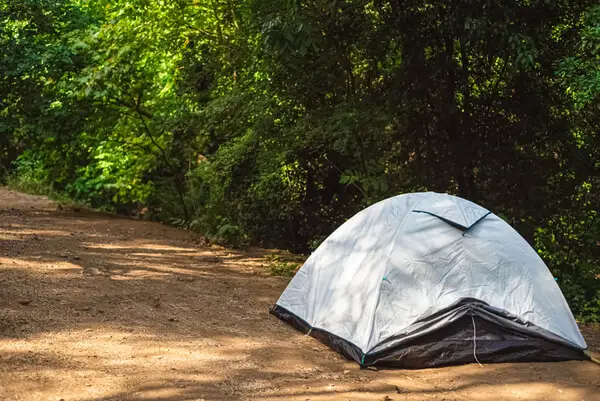
Psychological Impact of Tent Colors
Different colors can evoke different emotions and affect our perception of the surrounding environment. The color of a tent can have both practical and psychological implications.
Brighter colors like yellow or orange can evoke a sense of energy and positivity. These colors can help to boost mood and create a more vibrant atmosphere. They can also make it easier to spot your tent from a distance, which can be helpful in crowded campsites.
Darker colors like blue or green can create a calming atmosphere. These colors can help to promote relaxation and a sense of peace. They can also blend in better with natural surroundings, making them a good choice for camping in areas with a lot of vegetation.
It's important to note that everyone's perception of color can be different, and cultural factors can also play a role in how colors are interpreted. For example, in some cultures, white is associated with mourning, while in others, it represents purity and innocence.
When choosing a tent color, it's essential to consider your personal preferences and the environment you'll be camping in. A darker color may be a good choice if you're looking for a more relaxing atmosphere. A brighter color may be more suitable to create a more energetic and vibrant atmosphere.
Overall, the psychological impact of tent colors is an important factor to consider when choosing a tent. While it may not be the most important factor, it can impact your mood and overall camping experience.
Impact on Wildlife
As an outdoor enthusiast, I always minimize my environmental and wildlife impact. That's why I was curious to know whether my tent's color could impact wildlife. After doing some research, I found that the color of your tent can indeed affect wildlife.
Brightly colored tents can attract insects, especially mosquitoes, which can be quite annoying. Insects are attracted to bright colors and can easily mistake your tent for a flower or fruit. This can lead to a lot of buzzing and biting, ruining your camping experience.
On the other hand, natural-colored tents can blend in with the environment, making them less noticeable to wildlife. This can be particularly useful if you're camping in an area with a lot of wildlife, such as a national park. A natural-colored tent can help you avoid unwanted attention from bears, raccoons, and other animals that might be attracted to bright colors.
In addition, brightly colored tents can disrupt the natural habitat of wildlife. For example, if you're camping near a bird's nest, a brightly colored tent can scare away the birds and disrupt their nesting behavior. This can hurt the local ecosystem and wildlife population.
Overall, it's important to choose the right color for your tent based on the environment you'll be camping in and the wildlife in the area. If you're camping in an area with many insects or wildlife, a natural-colored tent can be a better choice. However, if you're camping in an area with low insect and wildlife activity, a brightly colored tent can be a good option.
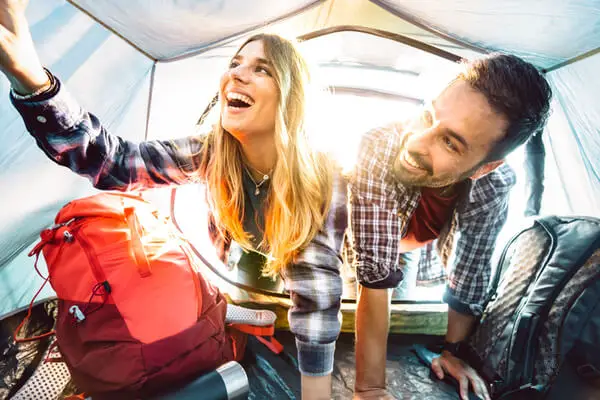
Regulations and Restrictions on Tent Colors
Knowing the regulations and restrictions on tent colors before making a purchase is essential as a camper. Here's what I have found:
Building and Life Safety Issues for Tents
According to a fact sheet by the National Fire Protection Association, there are specific guidelines for tents to ensure building and life safety. These guidelines include:
Tents must be made of flame-retardant materials.
Tents must have at least two exits that are marked.
Exits must be kept clear of obstructions.
Tents must have fire extinguishers readily available.
Tents must be located safely from other structures and combustible materials.
State and National Park Regulations
State and national parks have their regulations on tent colors. For instance, some parks require tents to be a certain color to blend in with the environment. Other parks may have restrictions on bright colors to avoid disturbing wildlife.
Before heading out on a camping trip, you must check the regulations and restrictions on tent colors in the area you plan to camp. This information can usually be found on the park's website or by contacting the park directly.
Personal Preferences
While regulations and restrictions on tent colors exist, personal preferences also play a role in choosing a tent color. Some people prefer bright colors to make their tent easier to spot in a crowded campsite, while others prefer natural colors to blend in with the environment.
Ultimately, the choice of tent color comes down to personal preference, but it's important to consider regulations and restrictions before purchasing.

Conclusion
In conclusion, tent colors do serve functional purposes. The color of your tent can affect the amount of light that gets blocked and the temperature inside the tent. Bright-colored tents like white, blue, yellow, red, and light green reflect most of the wavelengths of light and prevent heat from getting trapped inside you. On the other hand, dark-colored tents like black, navy blue, and dark green absorb more heat and can make the tent's interior hotter.
When choosing the color of your tent, it's essential to consider the environment you'll be camping in. If you're camping in the summer, choose a light-colored tent that reflects the sunlight and keeps you cool. In the winter, a dark-colored tent can help absorb heat and keep you warmer.
It's also important to consider the visibility of your tent. If you're camping in an area with many other tents, a bright-colored tent can help you stand out and make it easier to find your way back. On the other hand, if you're camping in an area with a lot of wildlife, a dark-colored tent can help you blend in and avoid attracting unwanted attention.
Overall, the color of your tent is an important factor to consider when choosing a tent. Choosing the right color lets you stay comfortable and safe while enjoying the great outdoors.
- Are Merrell Shoes Good? – An Unbiased Review of Merrell Footwear - December 9, 2023
- Where Are Merrell Shoes Made? - December 9, 2023
- Camping in 40-degree Weather: Tips and Tricks - September 25, 2023


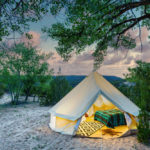
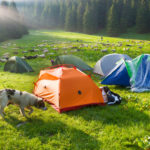
![Is Coleman a Good Tent Brand? [Explained] Is Coleman a Good Tent Brand? [Explained]](https://grandcircletrails.com/wp-content/uploads/2022/02/Is-Coleman-a-Good-Tent-Brand-1-150x150.jpg)
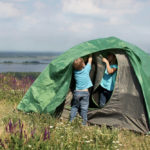
![How to Secure a Tent without Stakes? [5 Tips] How to Secure a Tent without Stakes? [5 Tips]](https://grandcircletrails.com/wp-content/uploads/2022/05/How-to-Secure-a-Tent-without-Stakes-150x150.jpg)